Some people refer to pancreatic cancer as the ‘silent killer’ because only 10% of patients make it to 5 years. It often lurks undetected until it reaches advanced stages. Pancreatic cancer tends to be aggressive and infiltrating, which is why we need to detect it at an early stage if we want to be able to remove it.
Table of Contents
What is pancreatic cancer?
Pancreatic cancer is not amongst the most frequent types. However, because it is very aggressive, it is amongst the deadliest. In the USA alone, over 60.000 people are diagnosed with pancreatic cancer every year, and over 48.000 will die from it.
The pancreas is an abdominal organ that makes enzymes to break down food into smaller componentes. It also produces some hormones like insulin and glucagon.
The pancreas is located next to your duodenum and surrounded by several arteries and veins. Besides, it’s very close to the biliary tract. Each of these structures can be infiltrated by a pancreatic cancer.
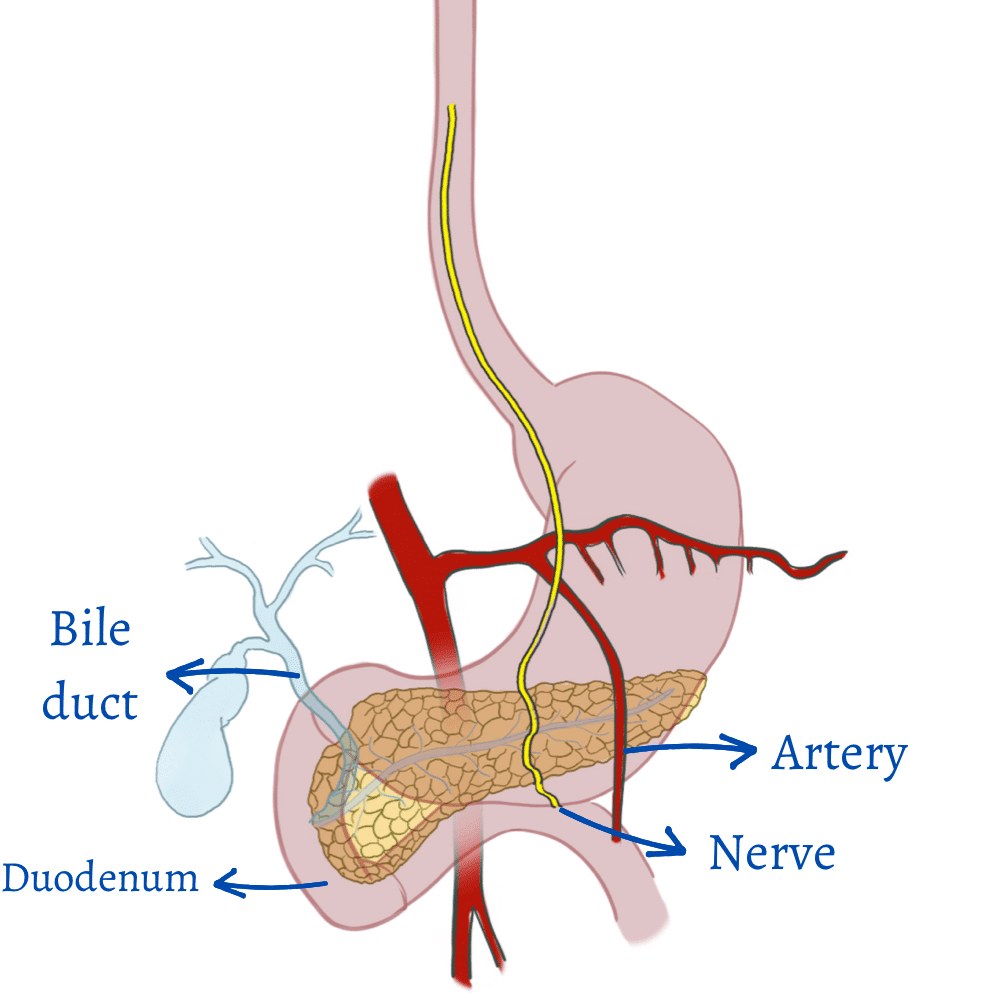
Your pancreas has 4 parts:
- Head: this is the part that is crossed by the biliary tract. Most tumors grow here.
- Unciform process: a tiny part next to the head. It has the shape of a hook.
- Body: it connects the head with the tail.
- Tail: the last part.
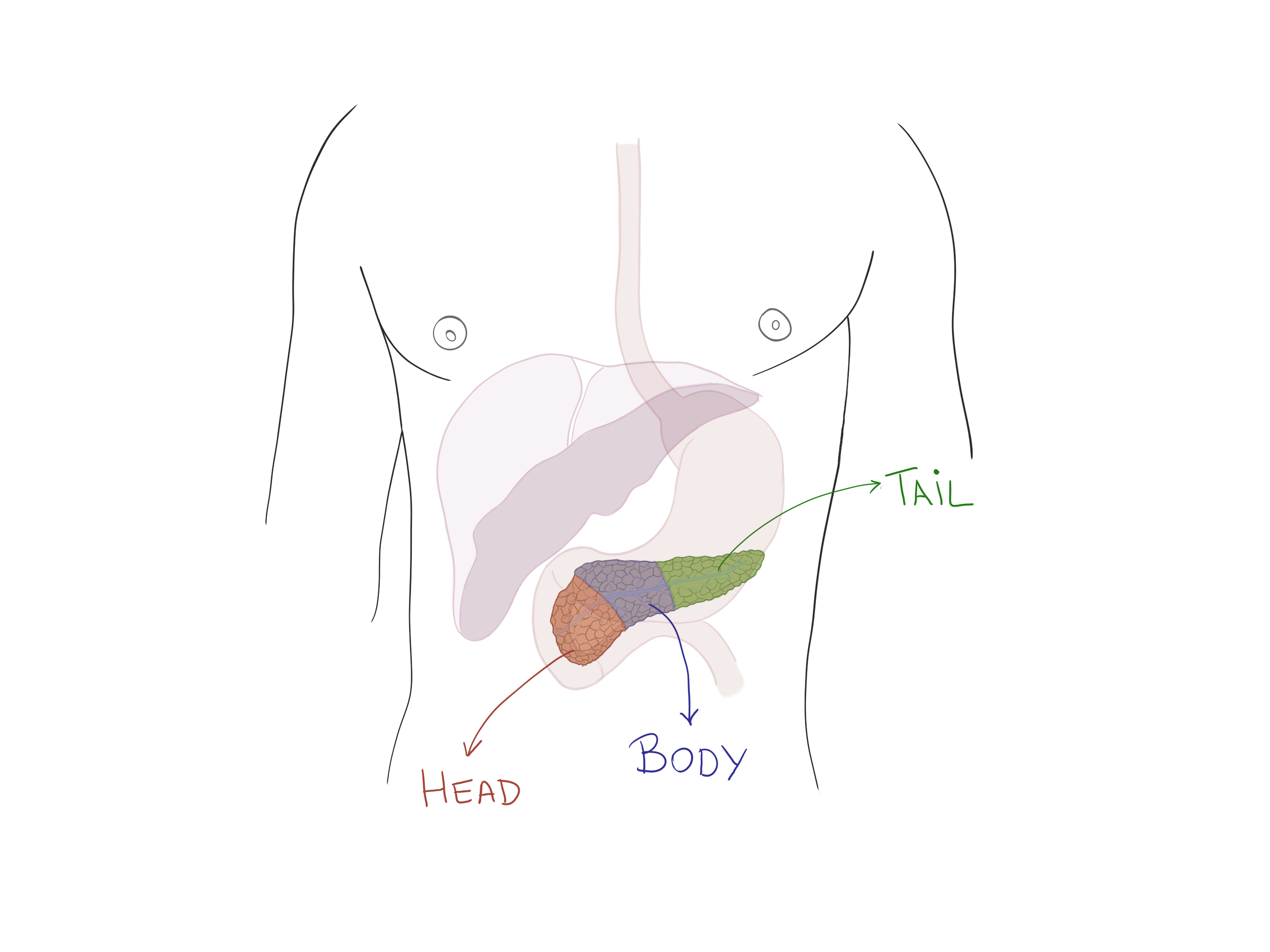
There are different types of pancreatic cancer
By far, the most common is adenocarcinoma. It accounts for 90% of pancreatic cancers. Unfortunately it’s also the most aggressive. The other 10% are different kinds like the neuroendocrine type (the type Steve Jobs had).
What are the symptoms of pancreatic cancer?
The most characteristic sign is your skin turns yellow (jaundice). This is because the biliary tract gets obstructed, so the bilirubin accumulates in your blood.
You can see the skin turn yellow as well as the sclera (the white of your eyes).
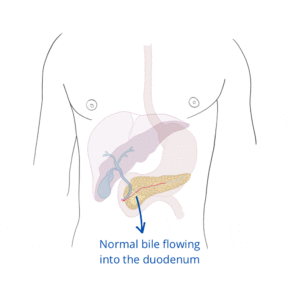
People with pancreatic cancer lose a lot of weight. They get emaciated. If you see a person that turns yellow and starts losing weight, with no pain, think of pancreatic cancer.
Another frequent symptom is itchy skin, when bilirubin gets really high.
You will notice changes in your poo and pee. Your pee will turn dark, like Coca-cola.
The opposite can happen to your poo: it turns white-ish.
In the beginning, you won’t feel pain. That’s why many tumors go unnoticed. However, if the tumor grows and invades some nerves, the irritation will cause pain. When pain happens, it’s usually a sign of infiltration.
Patients can suffer depression for some unknown reason (they get depressed before they know they have cancer). It’s not clear the relation between the pancreas and your mood, but there’s deffinitely a body-mind connection.
As many other tumors, pancreatic cancer causes constitutional syndrome, which means:
· loss of appetite
· weight loss
· fatigue
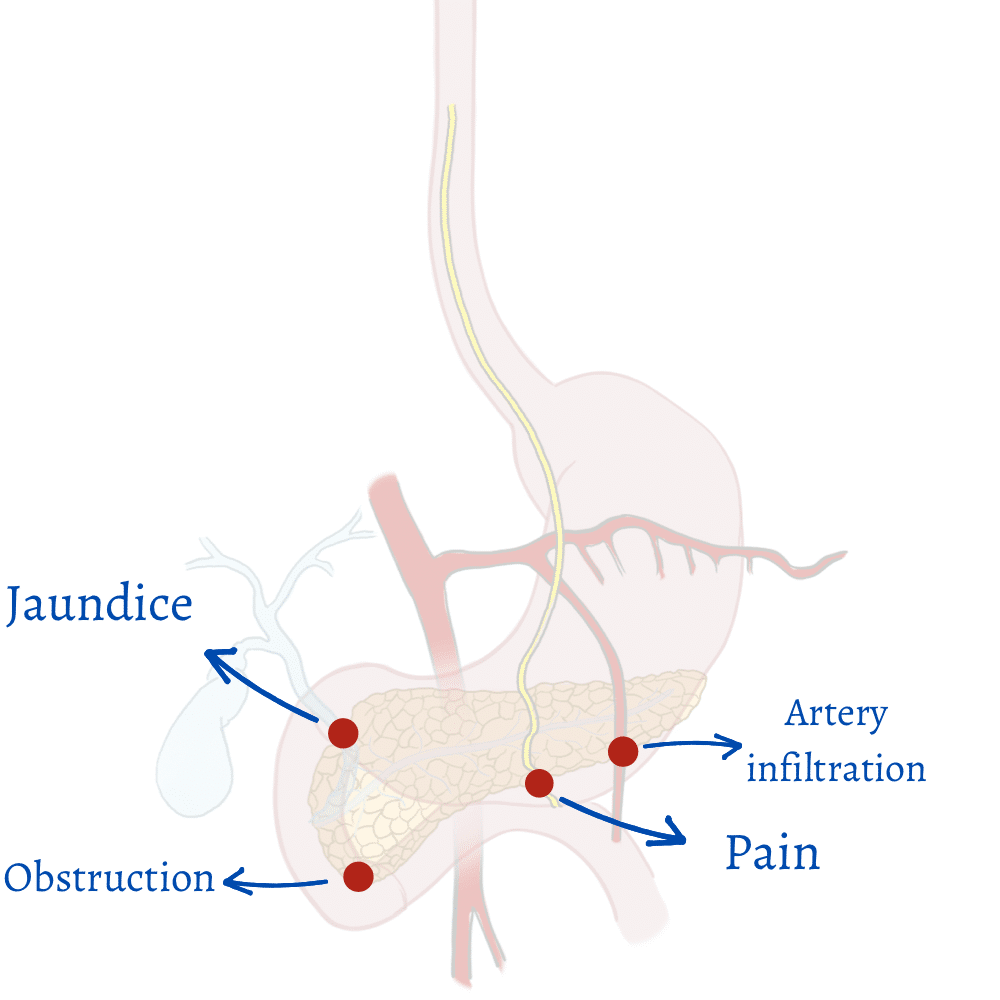
How do you diagnose pancreatic cancer?
Blood markers
There is one useful blood marker for pancreatic cancer: Ca 19.9. It goes up in patients with pancreatic cancer. However, it’s not specific. For example, it also rises in colorectal cancer.
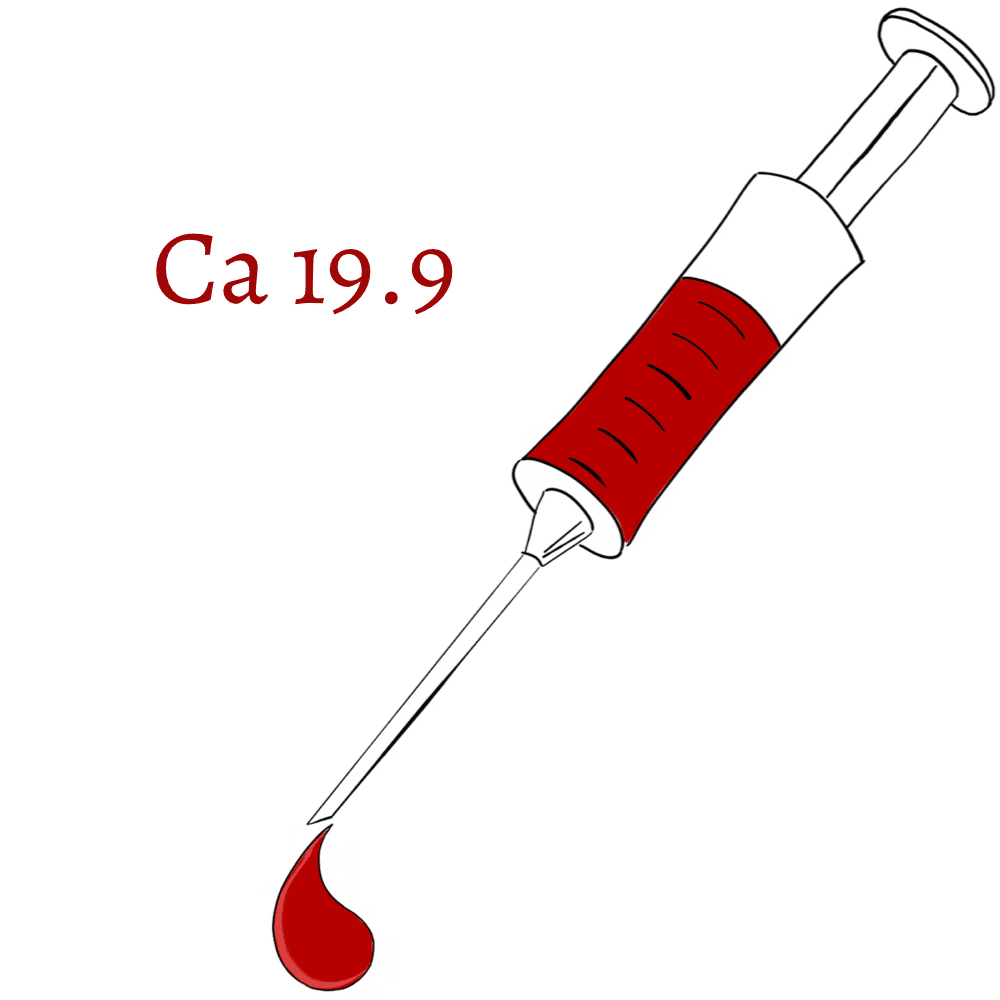
Ultrasound
Ultrasound (US) can detect pancreatic cancer, but it has some limitations. If the patient is obese or if there’s too much air in their bowel, US will be suboptimal.
Sometimes you can get an endoscopic US. They’ll insert a tube with the US probe through your mouth. It’s like doing an ultrasound “from the inside”. Endoscopic US is a good option but it’s more aggressive and it requires sedation.
C.T.
Computarized tomography (C.T.) is great for diagnosing pancreatic cancer. It not only shows the tumor but it also detects infiltration of surrounding structures and distant metastases.
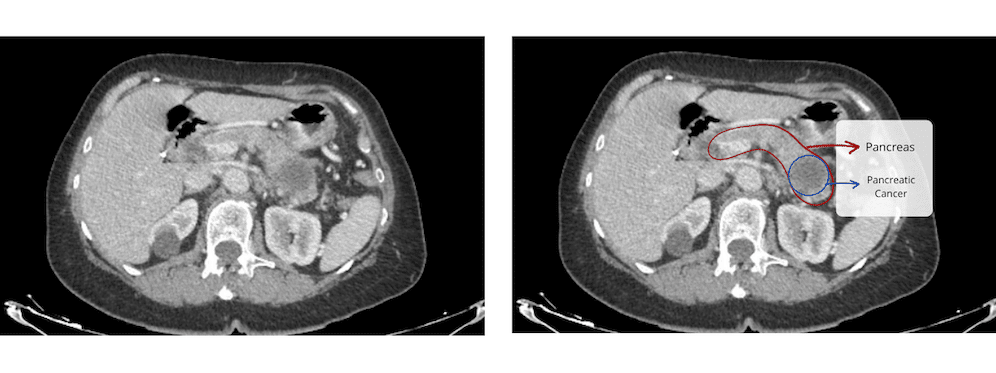
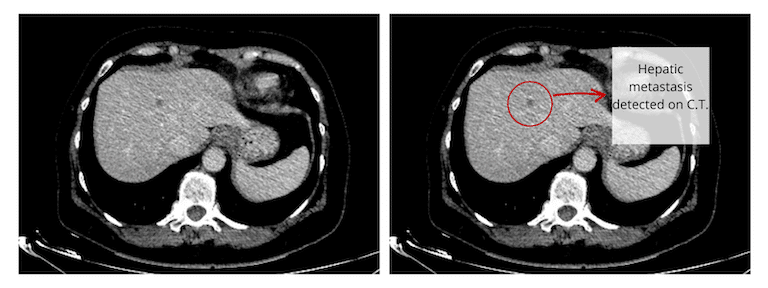
MRI
It’s a great option, but it’s more costly and time consuming, so we use it when C.T. is not enough.
Biopsy
A biopsy means getting a sample of the tumor. CT and MRI are great, but they don’t tell us for sure if it’s cancer. So we need a biopsy to make sure.
How do you treat pancreatic cancer?
Surgery
The only way to cure pancreatic cancer is through surgery, but it’s sometimes difficult to remove the tumor if it’s infiltrating other structures.
If the tumor is on the pancreatic head you’ll need a Whipple procedure. They’ll remove your pancreatic head and duodenum. Then they re-attach your stomach to your small bowel.
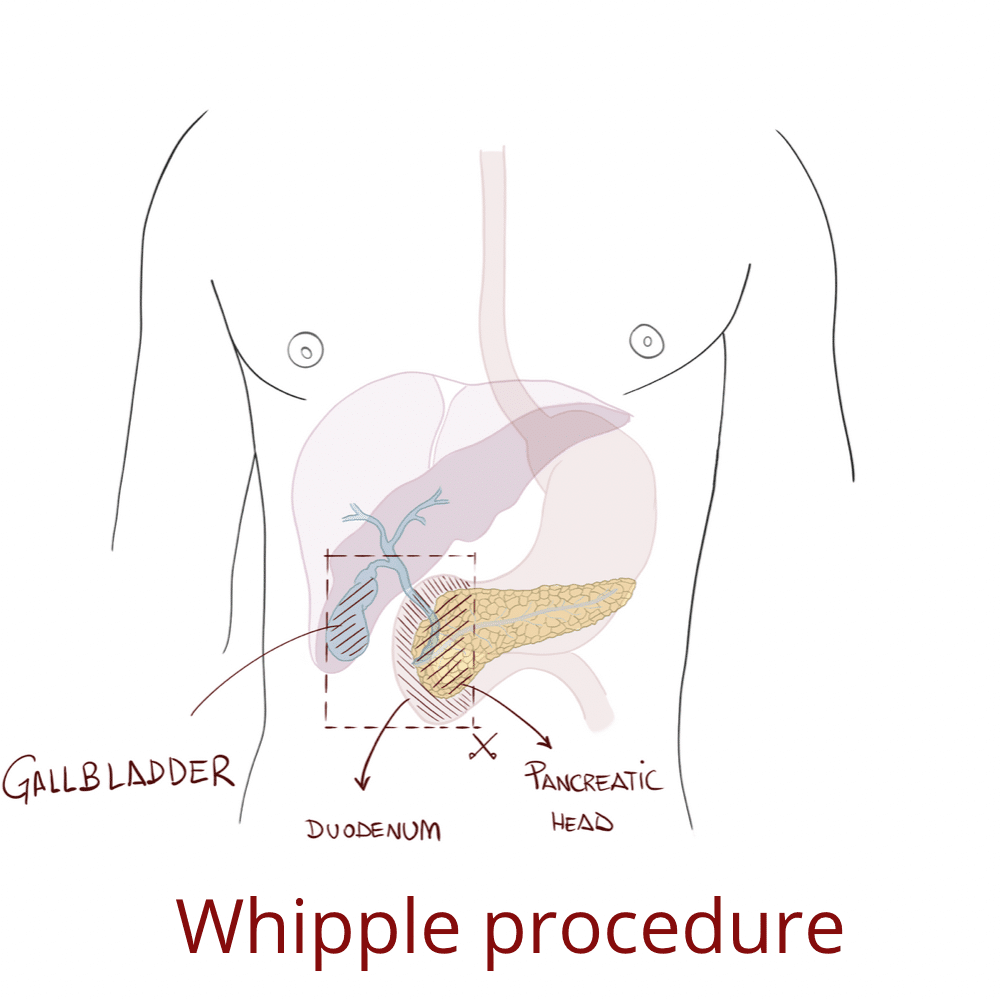
When the tumor is in the body or tail you’ll need a distal pancreatectomy. They just remove the body and the tail, but not the head.
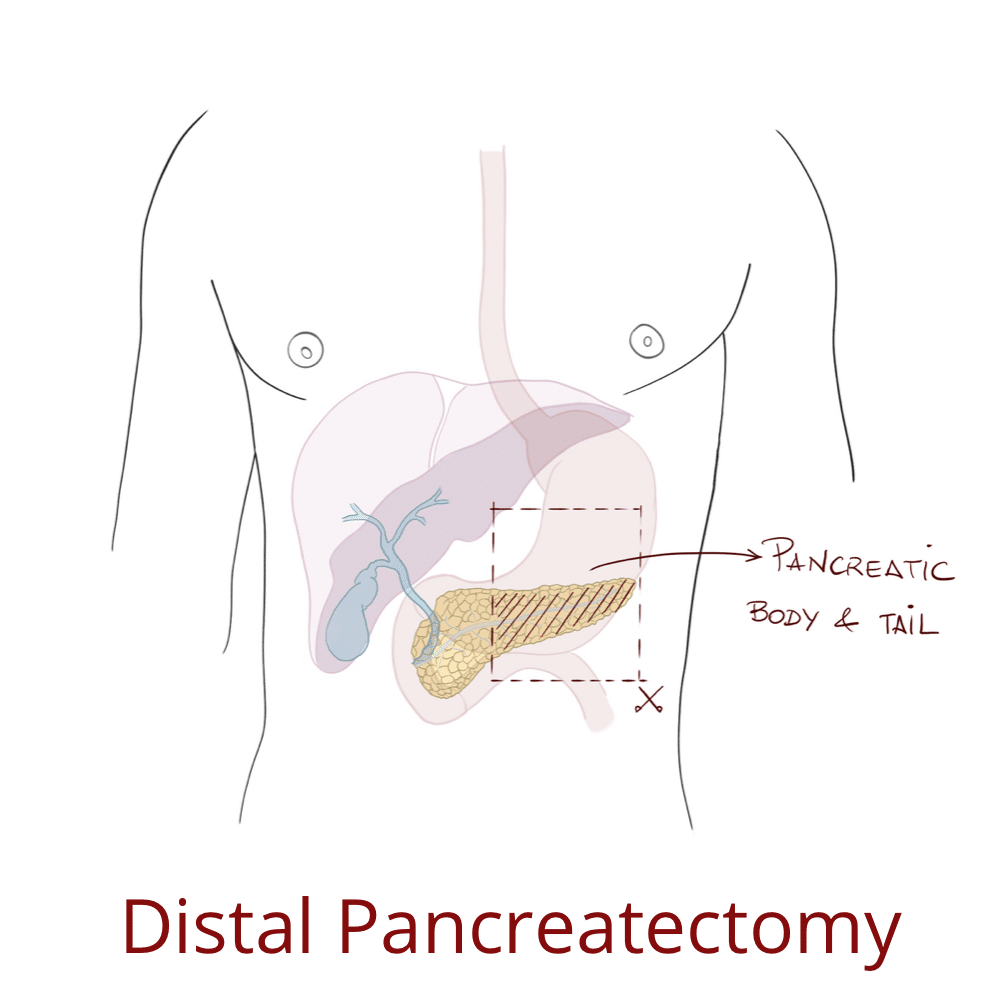
If the tumor has infiltrated the arteries around it, the task becomes tricky. Your surgeon may try to dissect it and remove it. It’s not an easy task though, and there is a risk for bleeding.
Chemotherapy
We can use chemotherapy before/after/instead of surgery.
· If we use it before surgery it’s called neoadyuvancy. The goal then is to shrink the tumor so that we can remove it later through surgery.
· When we use it after surgery it’s called adyuvancy. In this case, we use it to prevent cancer from coming back.
· Finally, if we use it by itself, our goal is to relieve symptoms and increase survival.
Radiotherapy
We can also use radiotherapy to shrink the tumor (and then remove it). If the tumor is at an advanced stage, we can use it along with chemotherapy to improve symptoms and survival.
Palliative care: biliary prosthesis/stent
Sometimes the tumor is causing jaundice and we can’t remove it cause it’s too infiltrating. In these cases, a biliary stent may be useful. It’s a small tube that we place inside the biliary tract, to keep it open. By opening up the biliary tract, we improve jaundice and itching.
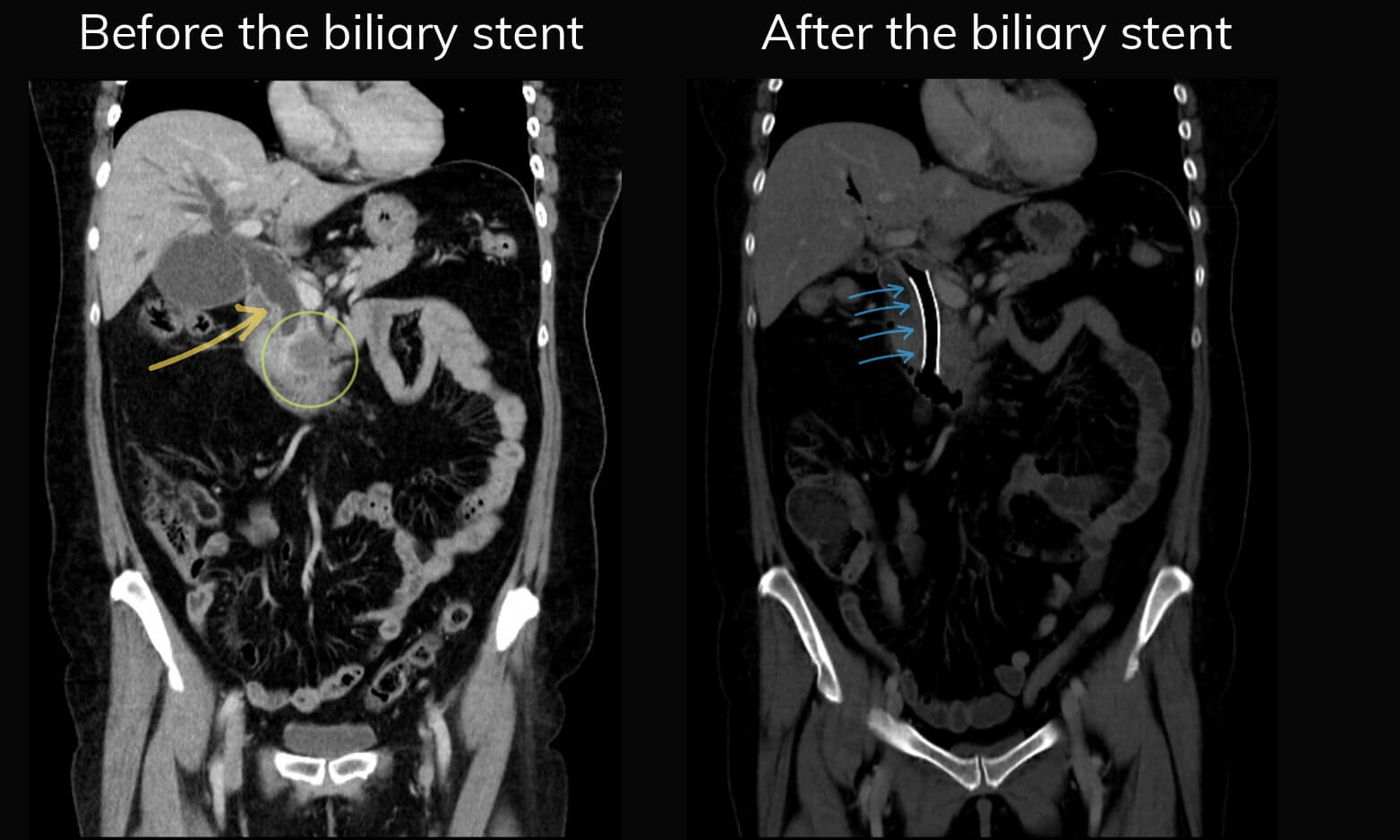
Questions and answers
-
“Can I live without my pancreas?”
Yes. If they remove your whole pancreas you will need insulin shots (like diabetic people).
-
“I have something in my pancreas but they are not sure what. Can it NOT be cancer?”
Yes, there are other diseases that mimic pancreatic cancer, like autoimmune chronic pancreatitis and benign tumors. That’s why biopsies are important, to confirm the diagnosis.
-
“What’s the usual life expectancy for pancreatic cancer?”
It depends a lot on the stage. If it only affects the pancreas, around 1/3 will get cured. On the other side, if it already infiltrates surrounding structures, the mean survival is poor, most patients lasting about 1 year.
-
“Can I get cured through alternative medicine?”
No, alternative therapies haven’t proved to be effective against pancreatic cancer. As we said, the best chance for recovery is surgery (with chemotherapy, usually).
Leave a Reply